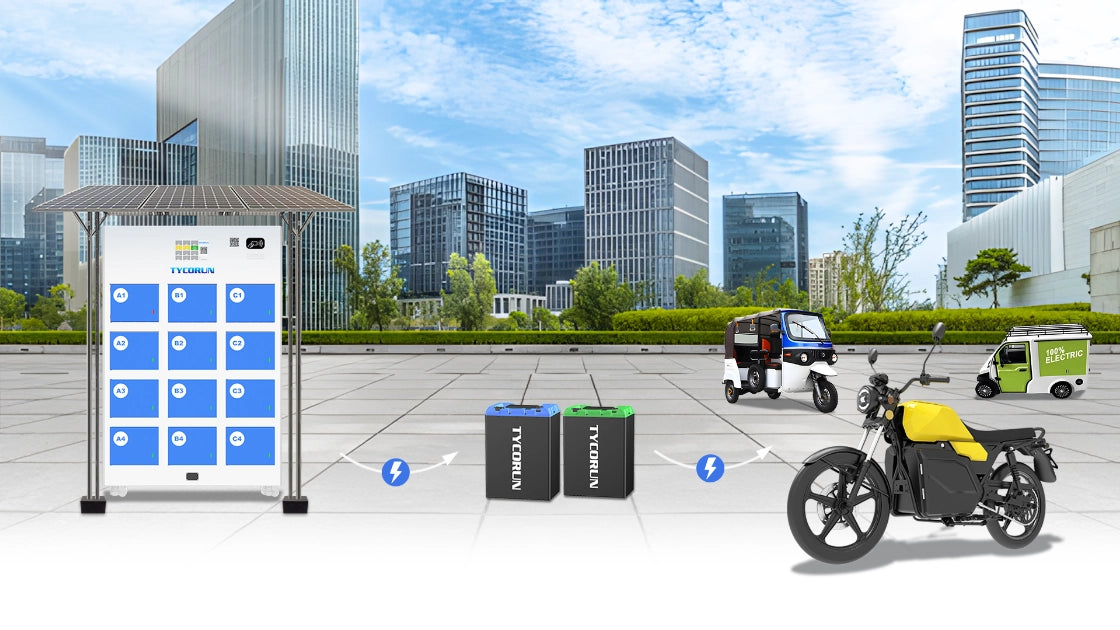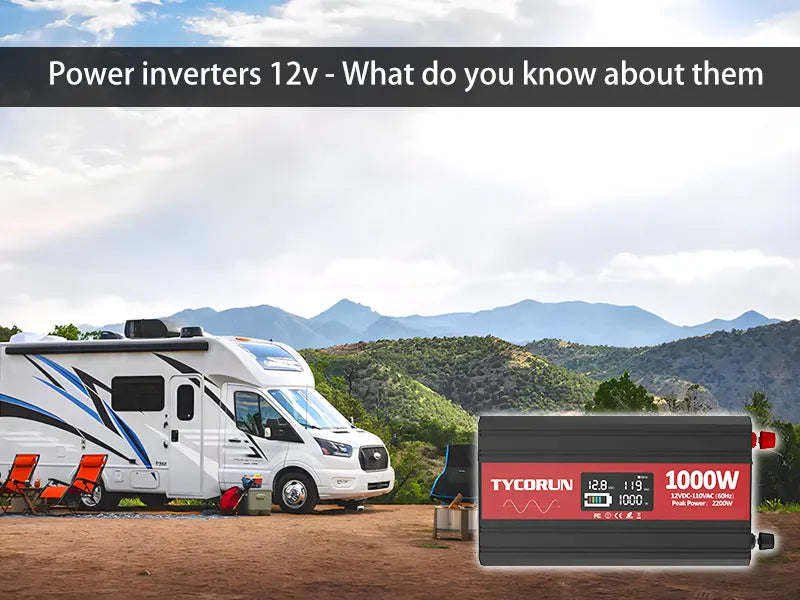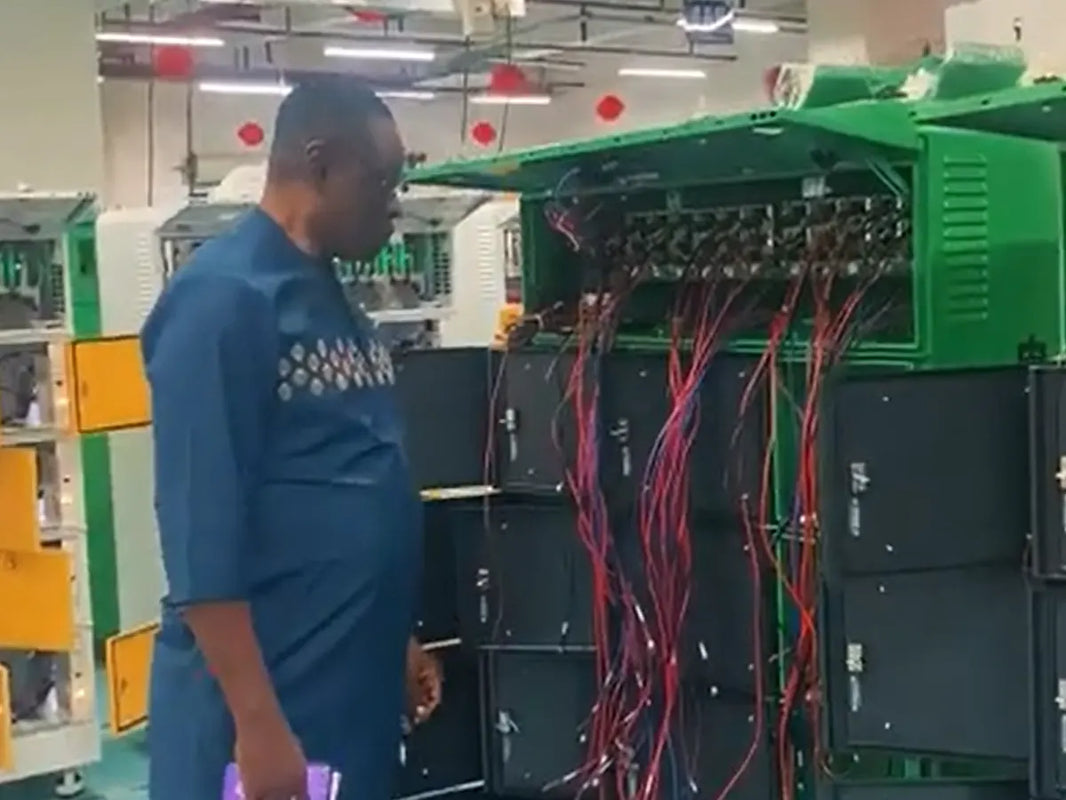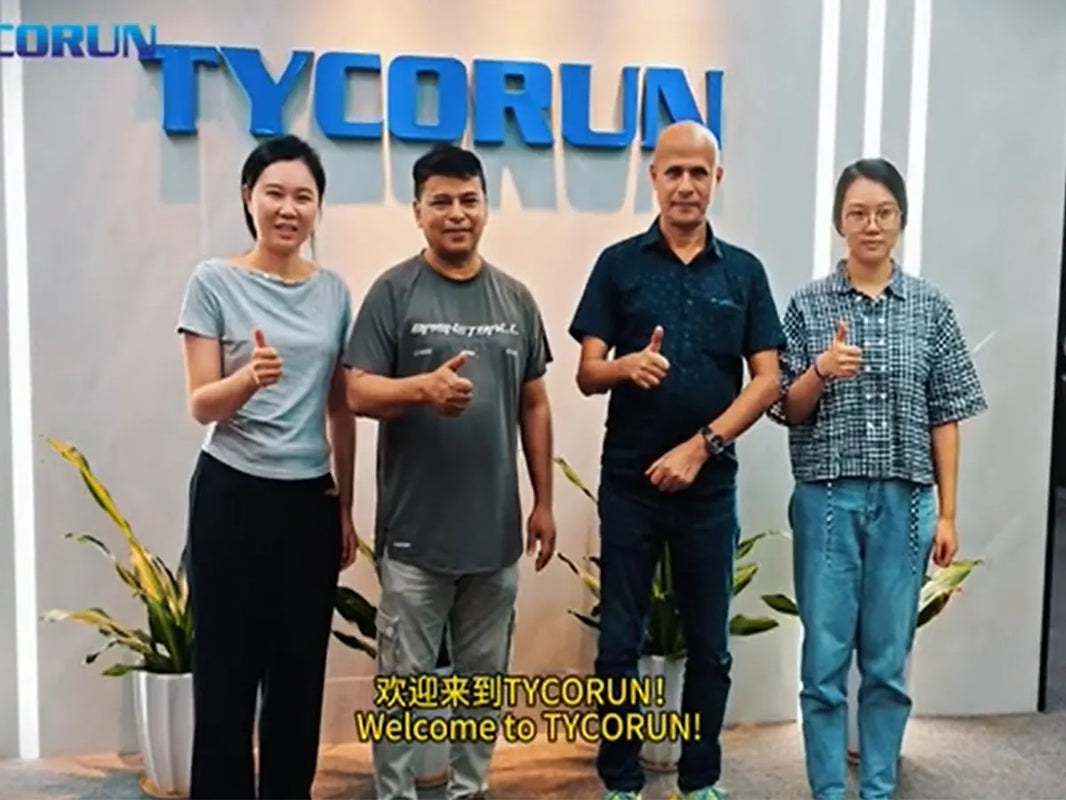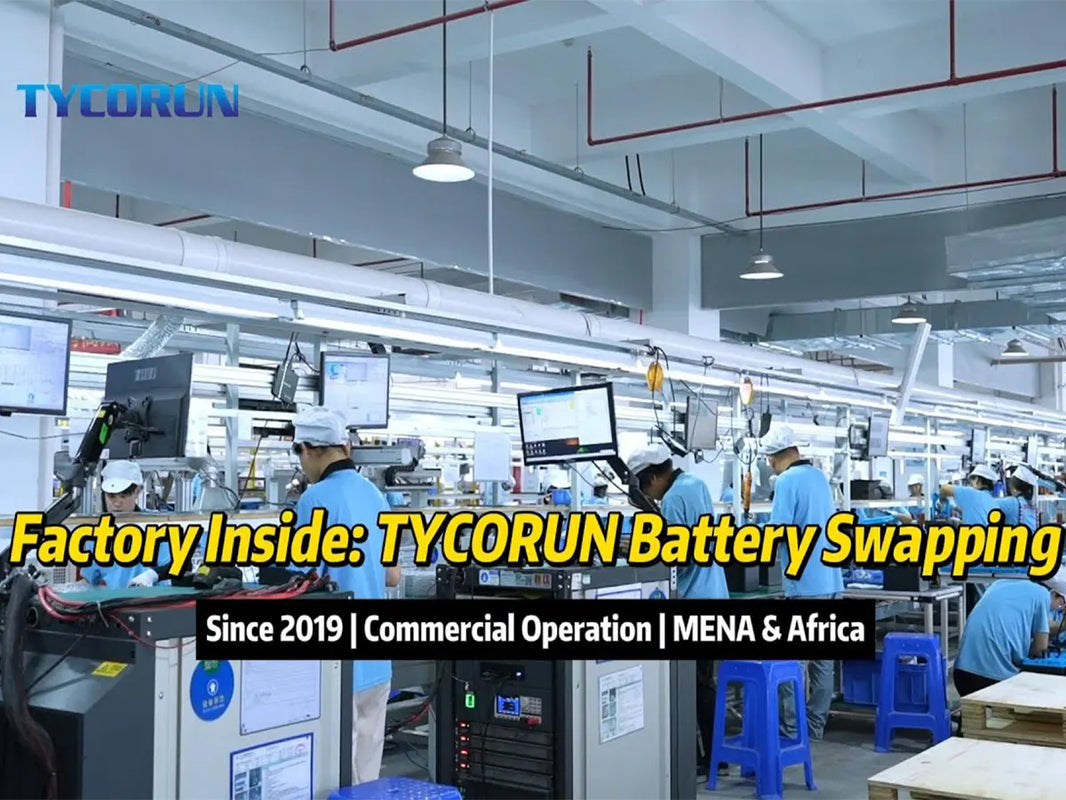
Main content:
In photovoltaic power generation systems, the cost of inverters accounts for approximately 5% to 8%. It is generally believed that the main function of photovoltaic inverters is to convert direct current into alternating current. However, it is not known that photovoltaic inverters not only change the direction of power supply in photovoltaic systems, but also play multiple very important roles.
Therefore, choosing the appropriate photovoltaic inverter plays a crucial role in improving power generation efficiency, reducing the cost per kilowatt hour, and thus better obtaining investment return.
This article will mainly focus on micro inverters and discuss the knowledge related to power inverters 12v, in order to enrich the product information needed by home, automotive, and marine buyers and gain a better understanding.
Type of power inverters 12v
In order to facilitate the selection of inverters by optoelectronic users, only the different applications of inverters are classified here.
In traditional photovoltaic systems, centralized inverters and string inverters are commonly used in medium to large scale projects.
Centralized inverters are generally used in systems of large photovoltaic power plants (>10kW). The biggest feature of this inverter is that the system has high power and low cost, and the power generation reliability of the entire photovoltaic system is affected by the poor working status of a certain photovoltaic unit group.
String inverters are based on modular concepts, where each photovoltaic string (1-5kw) is connected to the grid in parallel at the AC end through an inverter. They have become the most popular inverters in the international market today. Many large photovoltaic power plants use string inverters. Its advantage is that it is not affected by module differences and shadows between strings, and increases power generation.
In contrast, solar microinverters exhibit unique advantages in household and distributed photovoltaic systems.
In traditional PV systems, each string inverter's DC input terminal is connected in series by about 10 photovoltaic panels. When 10 battery panels are connected in series, if one of them cannot work well, this string will be affected. If multiple inputs of the inverter use the same MPPT, each input will also be affected, significantly reducing the power generation efficiency.
In the PV system of a micro inverter, each solar panel is connected to a micro inverter. When one of the solar panels cannot function properly, only that panel will be affected. Other photovoltaic panels will operate at their optimal working conditions, resulting in higher overall system efficiency and greater power generation.
Meanwhile, portable power inverters 12v have also received widespread attention in small off grid applications. This type of inverter is compact in size and easy to connect, suitable for 12V battery systems, and can provide stable AC power for laptops, small appliances, lighting equipment, etc. Especially suitable for camping, emergency power supply, fieldwork and other scenarios. Some high-performance portable power inverters 12v also support pure sine wave output, which is more stable and safe, ensuring the normal operation of sensitive electronic devices.

What does a power inverters 12v do
Inverters not only have the function of direct to alternating current conversion, but also have the function of maximizing the performance of solar cells and system fault protection. In summary, there are automatic operation and shutdown functions, maximum power tracking control function, anti isolated operation function (for grid connected systems), automatic voltage adjustment function (for grid connected systems), DC detection function (for grid connected systems), and DC grounding detection function (for grid connected systems).
Here is a brief introduction to the automatic operation and shutdown functions, as well as the maximum power tracking control function.
After sunrise in the morning, the solar radiation intensity gradually increases, and the output of the solar cell also increases. When the output power required for the inverter to work is reached, the inverter automatically starts running. After entering operation, the inverter constantly monitors the output of the solar cell modules. As long as the output power of the solar cell modules is greater than the output power required for the inverter to operate, the inverter will continue to run; Until sunset, even in rainy weather, the system may still operate, but the power generation efficiency will decrease. When the output of the solar cell module decreases and the output of the inverter approaches zero, the inverter enters a standby state.
The output of the solar cell module with maximum power tracking control function varies with the intensity of solar radiation and the temperature of the solar cell module itself (chip temperature). In addition, due to the characteristic of voltage decreasing with increasing current in solar cell modules, there exists an optimal operating point that can achieve maximum power. Always keep the operating point of the solar cell module at the maximum power point, and the system always obtains the maximum power output from the photovoltaic module. This control is called maximum power tracking control. The biggest feature of inverters used in solar power generation systems is the inclusion of maximum power point tracking (MPPT) function.
The above are common features of inverter for solar power. So let's take a look at what power inverters 12v can be used for and the scenarios in which it can be applied.
Power inverters 12V are suitable for residential rooftops or small commercial buildings, and are suitable for situations with limited space. By using a 12V photovoltaic inverter to convert the direct current generated by the photovoltaic panels into alternating current, power is supplied to household appliances such as refrigerators, televisions, and lighting, achieving self-sufficiency in household electricity consumption and reducing household electricity costs.
In camping or adventure activities, a 12v photovoltaic inverter can be used in conjunction with portable photovoltaic panels and batteries to provide power for lighting, small appliances (such as mobile phones, tablets, small fans, etc.), and small household appliances (such as rice cookers, projectors, etc.) inside the tent, meeting the needs of outdoor life.
For RVs and ships, 12v photovoltaic inverters can use solar energy to power on-board appliances (such as car refrigerators, speakers, navigation devices, etc.) and equipment on ships (such as lighting, ventilation equipment, etc.), reducing dependence on traditional fuel generators, lowering energy costs, and environmental pollution.

Working principle of power inverters 12v
The core component of power inverters 12v is the inverter circuit, which completes the inversion function by turning on and off the power electronic switch.
In order to maximize the utilization of solar cells and improve system efficiency, power inverters 12v are required to have high efficiency.
High reliability is required, and power inverters 12v need to have protection measures such as input DC polarity reversal protection, AC output short circuit protection, overheating, overload protection, etc. to ensure safe use.
Due to the variation of terminal voltage of solar cells with load and sunlight intensity, it is required that power inverters 12v have a wide range of input voltage adaptability. Especially when the battery ages, its terminal voltage varies greatly. For example, for a 12V battery, its terminal voltage may vary between 10V and 16V, which requires the inverter to ensure normal operation within a large range of DC input voltage.

How many hours can power inverters 12v last
The lifespan of an inverter is generally around 10 years, with a warranty period of 5 years. The probability of damage within 5 years is very low. When the service life of the inverter reaches 5-10 years, the inverter company provides paid maintenance services, and the probability of damage at this stage will be slightly higher.
The service life of Tycorun's 12V photovoltaic inverters is generally around 5-10 years, with a quality guarantee of two years. If you need to extend the warranty, you can also communicate with our staff.

Can a 12V inverter power a fridge
Refrigerators belong to inductive loads, and their starting current is usually 2 to 3 times the rated power. Therefore, when choosing an inverter, the starting power of the refrigerator should be considered.
The common power inverters 12v includes models such as 200W, 300W, 500W, 1000W, 1500W, 2000W, and 3000W.
The power of a typical household small refrigerator is around 100W-300W, but there will be 3-7 times the surge power (starting current) when starting. For example, a refrigerator with a rated power of 150W may instantly reach 450W-1000W when started. Therefore, the rated power of a 12v inverter is recommended to be at least 500W and must have peak load capacity.
Tycorun's pure sine wave inverter has high efficiency and low distortion, making it suitable for sensitive devices such as refrigerators.
In addition, Tycorun's inverters are equipped with various safety protection functions, such as low voltage protection, high voltage protection, overload protection, and short circuit protection, to ensure the safety of equipment and users.
Therefore, if there is a need to purchase a 12V inverter to power fridge, you can choose a Tycorun 12V pure sine wave inverter with appropriate power to safely and reliably power the refrigerator.

What can a 12V 3000W inverter run
A 12V 3000W inverter can drive various household or outdoor appliances as long as their total power does not exceed 3000W and the load type is suitable for using a pure sine wave inverter. The following is a table of electrical appliances that can be loaded with a 12V 3000W inverter.
|
Category |
Typical Devices |
Power Range |
|
Kitchen Appliances |
Induction cooker, rice cooker, oven |
800W – 2000W |
|
Home Appliances |
Refrigerator, washing machine, vacuum cleaner |
200W – 1500W |
|
Office Equipment |
Laptop, printer, monitor |
50W – 500W |
|
Entertainment |
TV, audio system, game console |
100W – 800W |
|
Power Tools |
Electric drill, saw, small air compressor |
800W – 2500W |
|
Outdoor Gear |
Electric kettle, electric blanket, portable AC |
500W – 1500W |
Matters needing attention:
Inductive loads such as refrigerators, air conditioners, motors, and other electrical appliances have high starting power, which is 2-3 times the rated power, and peak power space needs to be reserved. It is recommended to control the load within 80%, that is, for long-term operation, the total load power should not exceed 2400W to extend the life of the inverter.
In addition, when using low-voltage, high power of inverter such as 12V 3000W, high-power inverters have high requirements for battery matching. Because the 12V system requires a very high current (about 250A) when running a 3000W load, it is necessary to use a battery pack with sufficient capacity (such as parallel connection of multiple 12V 100Ah or above batteries) and copper core cables of appropriate specifications to prevent the risk of overheating or fire caused by excessive current in the circuit.

Conclusion
Overall, power inverters 12v are essential equipment in applications such as homes, RVs, boats, and camping. Choosing an efficient, stable, and safe inverter not only provides convenient electricity for your daily life, but also ensures electrical safety, energy conservation, and environmental protection. If you are looking for a suitable power inverters 12v for yourself, you may consider Tycorun's pure sine wave inverter series, which is of professional quality and trustworthy.
Related articles: Top 10 solar inverter manufacturers in 2025, Top 10 solar inverter companies in Spain, Top 8 solar inverter brands in South Africa

